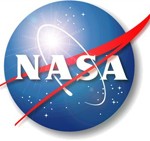Mars One is a not-for-profit organization that will take humanity to Mars in 2023, to establish the foundation of a permanent settlement from which we will prosper, learn, and grow. Before the first crew lands, Mars One will have established a habitable, sustainable settlement designed to receive astronauts every two years. To accomplish this, Mars One has developed a precise, realistic plan based entirely upon existing technologies. It is both economically and logistically feasible, in motion through the integration of existing suppliers and experts in space exploration.
We invite you to participate in this journey, by sharing our vision with your friends, by supporting our effort and, perhaps, by becoming the next Mars astronaut yourself.
Mar 25
Human Settlement on Mars in 2023
Mar 23
NASA to cancel education and public outreach activities?
 There seems to be a lot of stories going around about NASA canceling education and public outreach. If this is true it would be a bad thing for us all! I have put together some links to different stories talking about this topic. So take some time, read and see what you think.
There seems to be a lot of stories going around about NASA canceling education and public outreach. If this is true it would be a bad thing for us all! I have put together some links to different stories talking about this topic. So take some time, read and see what you think.
I just hope NASA and our government realize how important it is to continue to bring space and science to the public.
Mar 23
Mercury Mappers
Image credit: NASA/Johns Hopkins University Applied Physics Laboratory/Carnegie Institution of Washington
Cosmoquest has launched its Mercury Mappers beta program. This is where normal every day people can get involved in mapping the planet Mercury, you can assist MESSENGER mission scientists identify craters, boulders, and other features. If you have ever had an interest in helping the science community Cosmoquest is a great place to get involved so go give them a visit and get busy!


